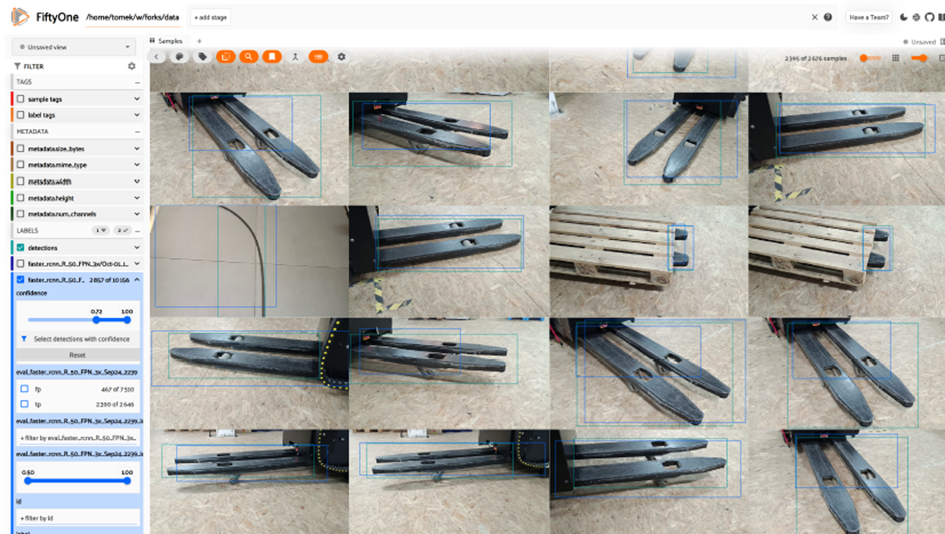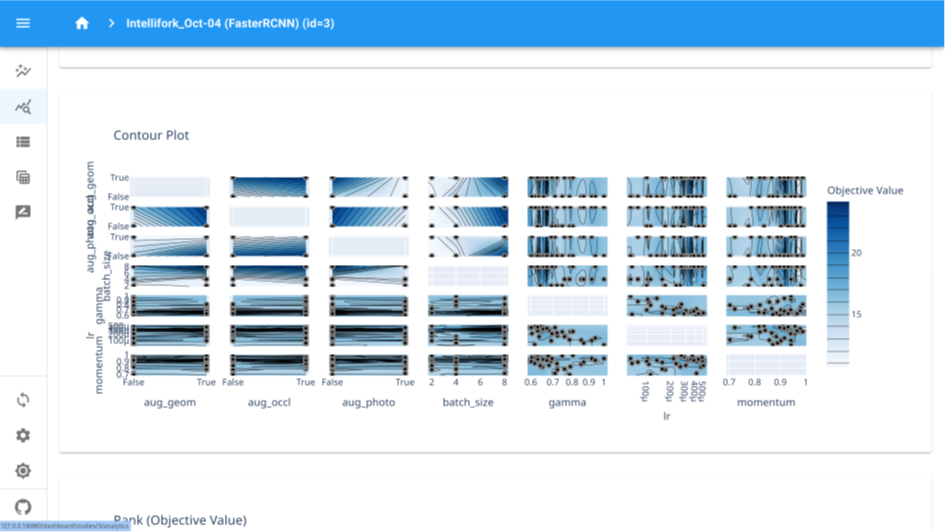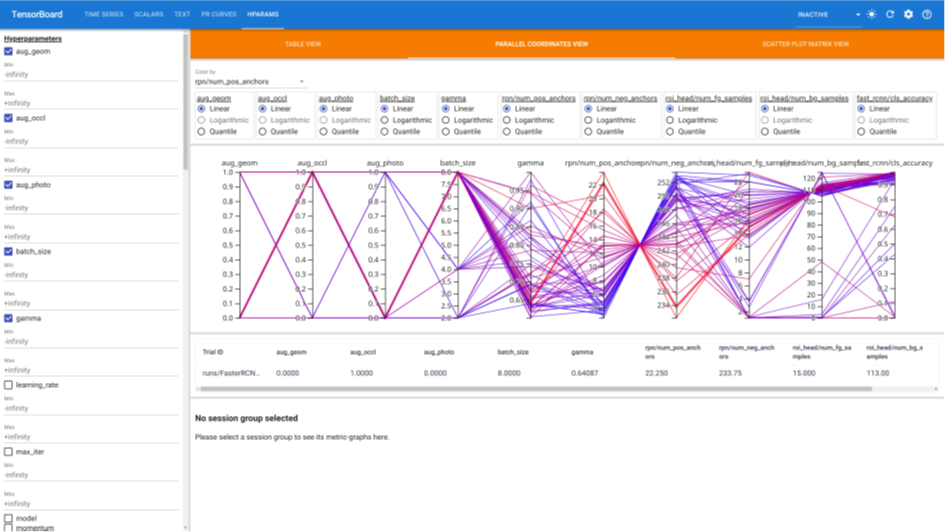The Challenge
A global leader in predictive maintenance faced the challenge of developing an advanced fork detection system for forklifts. Forklift forks, often positioned at floor level, are difficult for traditional sensors like lidar or ultrasonic detectors to identify. This posed a significant safety risk, as undetected forks could lead to collisions between AGVs (autonomous guided vehicles) and manually operated forklifts.
The goal was to create a system that enhanced safety and operational efficiency in warehouse and production environments. However, the company encountered several obstacles:
-
Lack of internal expertise: No in-house team with the technical knowledge required to develop an AI-powered solution.
-
Time pressure: The system needed to be deployed quickly to meet business demands.
-
Cost constraints: Building an in-house AI team would have been expensive and time-consuming.
The Solution
To overcome these challenges, the company partnered with Inovatica, outsourcing the development of the AI solution. Inovatica assembled a dedicated team of developers to take full ownership of the project and deliver an advanced solution that met all business and technical requirements.
How Inovatica Delivered Success:
-
Requirement Analysis Collaborated closely with stakeholders to understand the project's needs. Key priorities: Real-time fork detection. Data security using AES-256 encryption. Scalability for both mobile and desktop platforms. Defined success metrics: 95% precision and real-time detection capabilities measured in milliseconds.
-
Data Collection and Preparation Collected thousands of images from industrial environments to train AI models, ensuring real-world relevance. Annotated the dataset using CVAT (Computer Vision Annotation Tool), labeling forks, obstacles, and other objects. Augmented data with techniques such as image rotation, contrast adjustments, and noise simulation to improve model robustness. Validated dataset quality with FiftyOne, ensuring it met high standards for accuracy and completeness.

Using FiftyOne for visual inspection and quality comparison
-
AI Model Development Leveraged Detectron2 to develop and test object detection models. Achieved outstanding precision with Faster R-CNN and YOLOv5 architectures. Optimized models using Optuna AutoML, achieving inference speeds of 50ms per frame. Implemented robust DevOps infrastructure using Docker, Kubernetes, and TensorBoard for scalability and performance monitoring.

Optuna Panel: Objective Function Surface Projections

Using TensorBoard to Compare Metrics Across Different Configurations
-
Mobile App Development Delivered a mobile app using Android Studio, allowing real-time visualization of detection results. Deployed optimized AI models using ONNX Runtime and FP16 quantization, ensuring smooth performance on mobile devices. Combined Kotlin and Python to create a seamless user experience and efficient backend processing.
-
Testing and Deployment Conducted extensive tests in real industrial environments to validate system performance. Integrated the system with IoT infrastructure and databases, using PostgreSQL and MongoDB for data storage and real-time logging.
-
Post-Deployment Support Provided continuous monitoring and updates for AI models based on new data. Added additional features, such as pallet detection, to meet evolving business needs.
Results:
-
95% Fewer Warehouse Accidents: The AI-powered detection system significantly reduced safety risks and improved operational workflows.
-
Cost Savings: The outsourcing approach saved 35% compared to building an in-house AI team.
-
Rapid Deployment: The project was delivered within the required timeline, avoiding costly delays.
-
Scalable and Flexible Solution: The modular design allowed the system to evolve alongside business needs, ensuring long-term value.
Conclusion
Inovatica delivered an advanced AI-powered solution that transformed safety and efficiency in warehouse logistics. By combining technical expertise with agile development practices, the project exceeded expectations, achieving measurable business benefits.
Looking for a trusted partner to bring your AI project to life? Contact Inovatica today and let’s make your success story happen!